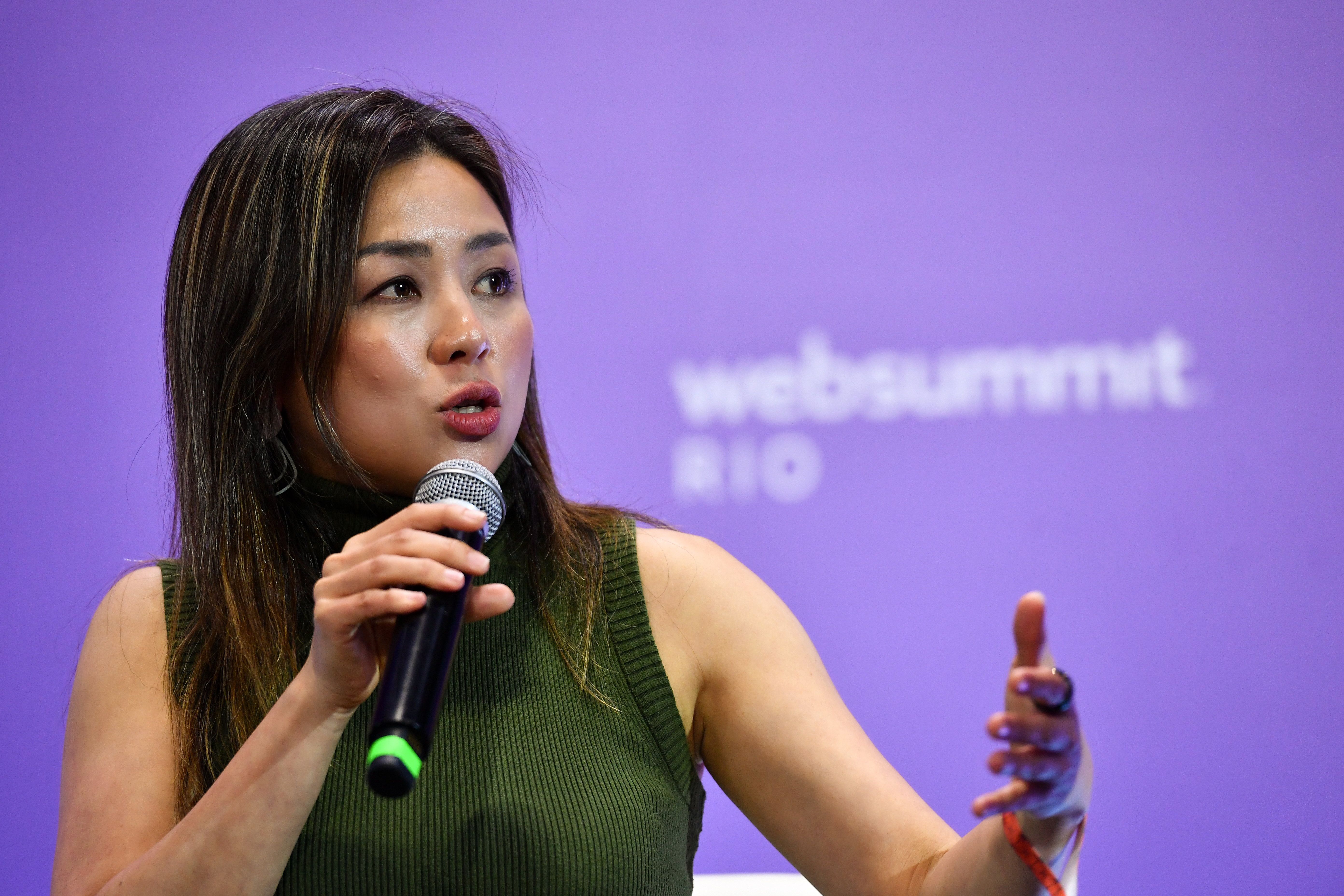Axie Infinity headline the Play to Earn model, but its legacy is up for debate
Axie Infinity
What Happened
Inspired by popular classics such as Pokemon and Tamagotchi, Axie Infinity is a multiplayer online game built on the Ethereum network that allows players to breed, raise, battle, and trade Axie creatures. Axies are the collectible NFT monsters required to play the game. Each player must own at least three Axies.
Released in 2018, Axie Infinity is the first blockchain-based video game to popularize the term “Play to Earn”. Play to Earn is a recent phenomenon that rewards players of blockchain games with token rewards for engaging in various activities within the virtual gaming environments. This emerging field in crypto is also referred to as ‘GameFi’.
In the case of Axie Infinity, players are able to earn two tokens, Axie Infinity Shards (AXS) and Smooth Love Potion (SLP). AXS serves as the game’s governance token, allowing token holders to vote on the future development of the gaming experience. SLP is the in-game currency used to breed and transact Axies.
Although Axie Infinity initially experienced explosive growth in terms of user adoption and token price appreciation, it has since run into headwinds as the SLP and AXS token prices collapsed alongside the broader crypto market and the game suffered a $500 million hack of its Ronin scalability sidechain. These incidents drove down the number of monthly active users from its peak of 2.8 million in January to 730,000 now.
But that might not be the biggest concern with Axie Infinity and the Play to Earn model. Since players are required to purchase the in-game assets to participate, either in the form of inflationary SLP and AXS tokens or Axie NFTs, analysts have begun to question whether the entire GameFi model is truly an innovative user acquisition strategy or just a plain vanilla pyramid scheme fueled by speculative hype.
Broader Context
Amongst crypto enthusiasts, Play to Earn has been heralded as a breakthrough approach in user incentivization, supercharging adoption by empowering users to monetize the time spent within digital worlds. However, to date, the crypto community has yet to see any token design approaches leading to sustainable user growth and value appreciation over the long term.
On the surface, there is little doubt that players stand to benefit immensely from new methods of monetization and the ownership of in-game assets. Nor are there many questions that users deserve to share the benefits. Game publishers typically keep 100% of the revenue generated from their games, whereas Axie Infinity’s take rate is just 4.25% of in-game item transactions. This means players are able to capture the majority of the value through the creation of new markets that did not exist before. It is a complete inversion of today’s gaming model. Game publishers can still benefit by building stronger player loyalty and thriving secondary markets that result in substantial royalty revenues funneled back to the game creators.
Initially, these game dynamics, accelerated by the pandemic-driven trading boom, led to explosive growth in user adoption and transaction volume within Axie Infinity. In September of 2020, the game had around 50,000 monthly active players. Just one year later, it had just under 2 million monthly players, a 3,811% year-over-year increase. These players were predominantly located in emerging markets, such as the Philippines, Thailand, Vietnam and Venezuela. During the pandemic lockdowns, players within these countries were using the game not as a form of leisure, but as a way to supplement or supplant their incomes.
Adoption was also heightened by a type of apprenticeship in the game called “guilds”. At the game’s peak of usage and adoption, the upfront investment for the three Axies required to play the game reached as high as $1,200. This was prohibitively costly for new players in emerging markets, and thus a new cottage industry of player guilds emerged. These guilds purchase Axies and then sponsor, or lend out the NFTs to player “scholars” forming a revenue share agreement. Any proceeds earned by these scholars playing the game are shared by the guild and the player, with guilds taking as much as 40%. Some of the prominent guilds participating in this schema include Yield Guid Games, Good Games Guild, and Merit Circle. Yield Guild Games reported they sponsor 10,786 scholars that have generated over $11.3 million in total in-game earnings.
Player guilds controversially create a divide between capital and labor within GameFi ecosystems, with the guild owners retaining ownership of the assets and effectively employing players without providing basic labor rights or benefits. Despite their arguably exploitative nature, guilds continue to play an important role within nascent GameFi ecosystems. In addition to sponsoring players, they are also accumulating valuable assets within GameFi games and are investing in the underlying project teams building out these games.
Engagement with Axie Infinity has plunged
DappRadar
Due to rampant inflation within the tokens’ supply and waning user demand, Axie Infinity’s AXS token has declined 89% from its peak of $160 in November to its current price of $18. SLP has fallen a massive 99% from its peak of $0.36 to its current price of $0.005. Sky Mavis reports that five times the amount of SLP is created each day compared to the amount burned through the Axie breeding process, representing supply inflation of ~18-19% every month. This trend was clearly unsustainable.
To address the supply-demand imbalance, Sky Mavis altered the token economics in February by no longer issuing SLP for users playing in Adventure mode and no longer rewarding users who have completed the daily quest, meaning players could only earn tokens in the PVP Arena mode.
By removing these methods of token emission, the team has reduced the number of SLP minted daily significantly, lowering the average of 350 million new tokens minted daily in the week leading up to the update to an average of 167 million tokens the week after. Notably, the token supply is still inflationary with only an average of 18 million tokens burned daily following the update.
Although these changes led to a short-term bump in the price of SLP, the token’s downward trajectory continued. Largely driven by the drop in token value, the monthly active user count also dropped by 74%. Year to date, both SLP and AXS tokens are down more than 80 percent and they do not seem to benefitting from the recent bull run being driven by positive sentiment emerging from the forthcoming Ethereum merge.
AXS and SLP are not riding ETH’s coattails
TradingView
Key Quote
“The video games industry does about $120 billion per year in sales, a significant portion of which is virtual goods,” said a16z General Partner Chris Dixon. “Most video games have 100% take rates. Web3 (aka crypto) games reduce the take rate dramatically.”
Key Statistic
Lifetime to date, Axie Infinity has done over $4.2 billion in cumulative trading volume, implying game developer Sky Mavis has earned $180 million in revenue and players earned over $4 billion.
Outlook and Implications
If Axie Infinity is not able to reverse these adoption trends, it will be easier for critics to dismiss the platform and entire Play to Earn approach as nothing but a pyramid scheme that lures in new investors and pays profits to earlier investors with funds from the recent investors.
The Play to Earn mechanic popularized by Axie Infinity has sparked countless other games to propose or implement the same model to reward players and accelerate early growth. Some of the more popular examples include “Move to Earn” app STEPN and blockchain games Gods Unchained, Splinterlands, DeFi Kingdoms, and Pegaxy, amongst many recently launched and upcoming titles.
To be clear, this was not the intention behind Sky Mavis, Axie…
Read More: www.forbes.com









 Bitcoin
Bitcoin  Ethereum
Ethereum  XRP
XRP  Tether
Tether  Solana
Solana  Dogecoin
Dogecoin  USDC
USDC  Cardano
Cardano  Lido Staked Ether
Lido Staked Ether  TRON
TRON  Avalanche
Avalanche  Sui
Sui  Wrapped stETH
Wrapped stETH  Chainlink
Chainlink  Toncoin
Toncoin  Shiba Inu
Shiba Inu  Stellar
Stellar  Wrapped Bitcoin
Wrapped Bitcoin  Polkadot
Polkadot  Hedera
Hedera  WETH
WETH  Bitcoin Cash
Bitcoin Cash  Uniswap
Uniswap  Litecoin
Litecoin  Pepe
Pepe  LEO Token
LEO Token  Hyperliquid
Hyperliquid  Wrapped eETH
Wrapped eETH  NEAR Protocol
NEAR Protocol  Ethena USDe
Ethena USDe  Internet Computer
Internet Computer  USDS
USDS  Aptos
Aptos  Aave
Aave  Mantle
Mantle  Bittensor
Bittensor  POL (ex-MATIC)
POL (ex-MATIC)  Cronos
Cronos  Render
Render  Ethereum Classic
Ethereum Classic  Artificial Superintelligence Alliance
Artificial Superintelligence Alliance  Virtuals Protocol
Virtuals Protocol  Arbitrum
Arbitrum  Ethena
Ethena  MANTRA
MANTRA  Filecoin
Filecoin  WhiteBIT Coin
WhiteBIT Coin